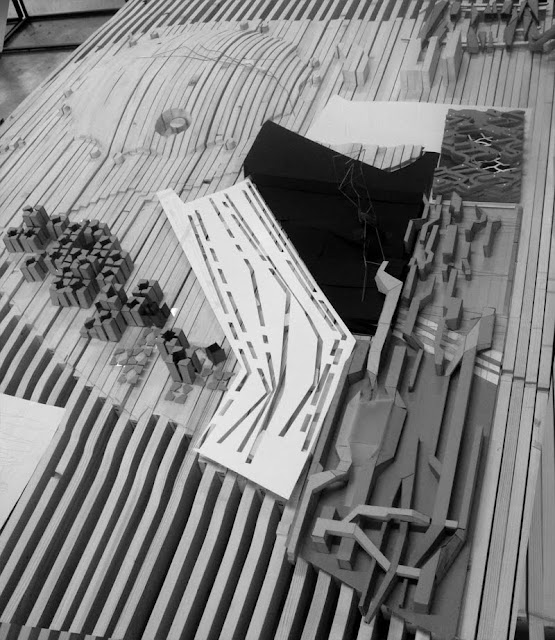An attempted conglomerate of our groups systems on the Greenwich Penninsula.
Our urban condition (a pedestrian city) needs to now look at a globalized system throughout our individual plots. Spatial logics, landmarks, clear & understandable connections and routes, orientations, etc... as well as understanding the existing conditions.
Above: Initial exploration into system continuation between individual systems.
above: Extending the construction lines of Jenny's pattern/system into the plot, whereby the bars start to shift (with the same local logic as before) at the point they coincide with the line extension. The same starts to occur at the meeting of the road/blackwall tunnel also.
individually - my system needs to perform better as a field, still the 3D exploration appears as a series of objects upon the ground plane. A ground condition should also be explored.







































